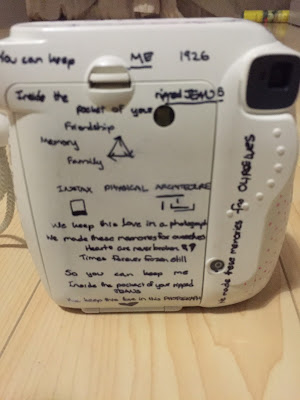 |
| Polaroid Camera |
Architecture Photography
Personal Interest
I decided to choose Instax mini Polaroid camera as my found object as
the camera usage in Architecture dated way back to 1385, the first architectural photograph View from
the window at Le Gras was taken by Nicephore Niepace. Buildings have
been highly valued photographic subjects, mirroring society's appreciation for
architecture and its cultural significance throughout decades. Architectural
photography usually utilized as an established visual medium. As an
architecture student, we usually refer the photographs of Iconic buildings to
study history of architecture and I love taking photographs because they always
remind me of good memories in my life that I can never go back.
But in these digital era, someone might ask 'Why Polaroid and not digital
camera?'. One big benefit of instant
film cameras is the instant gratification that they provide those who use
digital have the ability to see their pictures right after snapping them yet
they still have to go somewhere, upload, and print in order to get a tangible,
hard copy of their image. With instant film the process is far simpler, just
snap and waits for the print to shoot out the side, where it will magically
develop within just a few minutes. The images produced by instant camera film
are different from those produced by digital cameras. They have their own fuzzy, retro look, and a white
surrounding block that safely encompasses the image like a frame.
Pictures produced through instant film have a unique look that can never be
totally duplicated, as hard as online digital photo-editing applications may
try. Using an instant film camera while travelling is a great way to capture
fun, candid shots, and can give away the photos as a souvenir to new friends
you meet during the trip. The photos from instant camera have a one-of-a-kind
quality that cannot be replicate. Polaroid-style pictures make great additions
to scrapbooks. They present a small white patch at the foot of the image that
is perfect for adding the date, time, or subject's name. They also look funky
and retro, against digital and conventional prints. Taking good instant photos
requires talent and a sharp eye. There are no do-overs or edits. It is a unique
hobby that will certainly set you apart from your digital point-and-shoot
companions. Even the nicest, most-advanced digital camera cannot rival the
looks of interest and admiration that follow a person cool enough to whip out a
trendy new Fuji Instax and start snapping away.








































